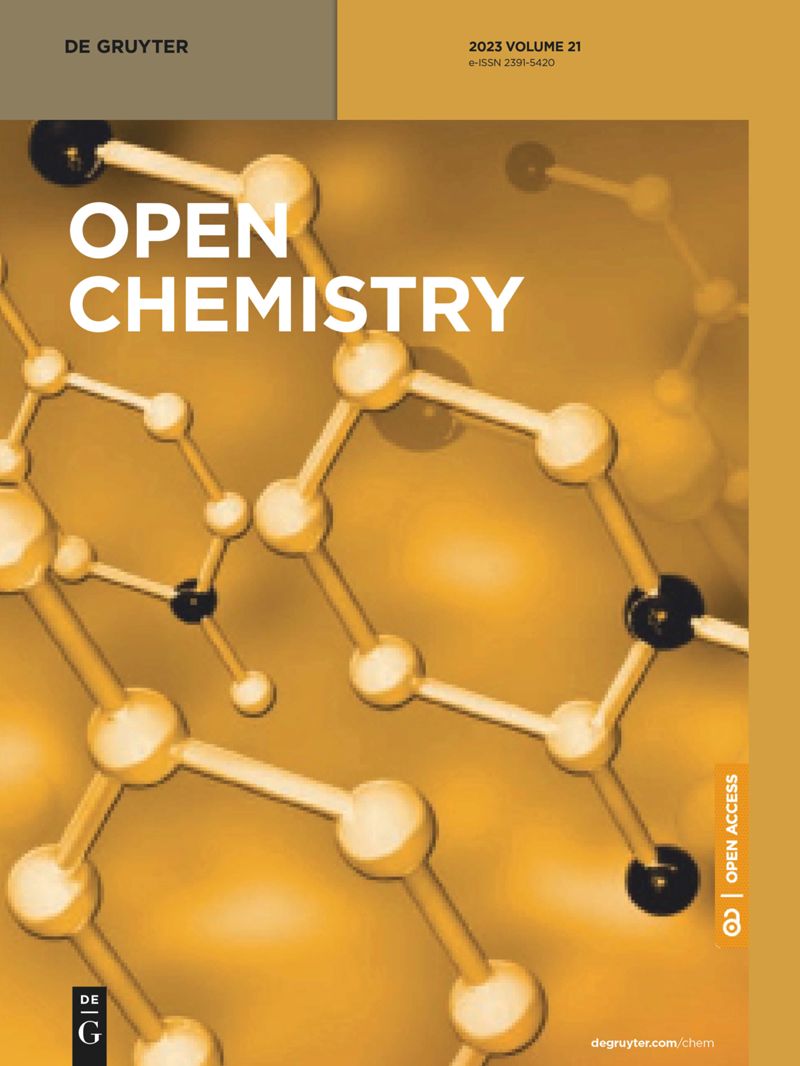通过将碘离子插层到聚吡咯基质中实现水中 Pb2+ 离子的电位感测的中空蘑菇纳米材料
IF 2.1
4区 化学
Q3 CHEMISTRY, MULTIDISCIPLINARY
引用次数: 0
摘要
本文通过在聚吡咯基质中插层碘离子,合成了一种用于测定铅(Pb2+)离子的传感器。该传感器的能斯特斜率为 31.7 mV/decade,表明在 10-5-10-1 M 的浓度范围内具有线性响应;检测限为 9.10-6 M,表明该传感器对低浓度 Pb2+ 具有灵敏度。循环伏安法证实了 Ppy/I- 传感器在 Pb2+ 检测中的有效性,在循环伏安法中观察到的峰值电位为 -0.2 V。传感器检测 Pb2+ 的灵敏度为 2 µA/M。此外,Ppy/I- 传感器对干扰离子呈负响应,这增强了其检测 Pb2+ 的选择性。此外,当使用通常不含铅离子的自来水或地下水等天然水样进行测试时,传感器对此类水样中常见的正常干扰离子也会产生负反馈。Ppy/I- 传感器具有多种优势,包括能在极低浓度下检测 Pb2+ 离子、设计灵活、适应性强以及制备技术成本低。这些特点使其成为准确高效检测 Pb2+ 离子的理想工具。本文章由计算机程序翻译,如有差异,请以英文原文为准。
Hollow mushroom nanomaterials for potentiometric sensing of Pb2+ ions in water via the intercalation of iodide ions into the polypyrrole matrix
Herein, the synthesis of a sensor for the determination of lead (Pb2+ ) ions via the intercalation of iodide ions into the polypyrrole matrix is performed. It demonstrated a Nernstian slope of 31.7 mV/decade, indicating a linear response within the concentration range of 10−5 –10−1 M. The detection limit achieved is 9.10−6 M, indicating the sensor’s sensitivity to low concentrations of Pb2+ . The effectiveness of the Ppy/I− sensor in Pb2+ sensing is confirmed through cyclic voltammetry, where a peak potential of −0.2 V is observed. The sensitivity of the sensor for Pb2+ detection is measured to be 2 µA/M. Moreover, the Ppy/I− sensor exhibits a negative response to interfering ions, which enhances its selectivity for Pb2+ detection. Furthermore, when tested with natural water samples such as tap or underground water, which are typically free of lead ions, the sensor demonstrates a negative response to normal interfering ions commonly found in such samples. The Ppy/I− sensor offers several advantages, including the ability to detect Pb2+ ions at very low concentrations, a flexible and adaptable design, and a cost-effective preparation technique. These features make it a promising tool for accurate and efficient detection of Pb2+ ions.
求助全文
通过发布文献求助,成功后即可免费获取论文全文。
去求助
来源期刊

Open Chemistry
CHEMISTRY, MULTIDISCIPLINARY-
CiteScore
3.80
自引率
4.30%
发文量
90
审稿时长
6 weeks
期刊介绍:
Open Chemistry is a peer-reviewed, open access journal that publishes original research, reviews and short communications in the fields of chemistry in an ongoing way. The central goal is to provide a hub for researchers working across all subjects to present their discoveries, and to be a forum for the discussion of the important issues in the field. The journal is the premier source for cutting edge research in fundamental chemistry and it provides high quality peer review services for its authors across the world. Moreover, it allows for libraries everywhere to avoid subscribing to multiple local publications, and to receive instead all the necessary chemistry research from a single source available to the entire scientific community.
 求助内容:
求助内容: 应助结果提醒方式:
应助结果提醒方式:


